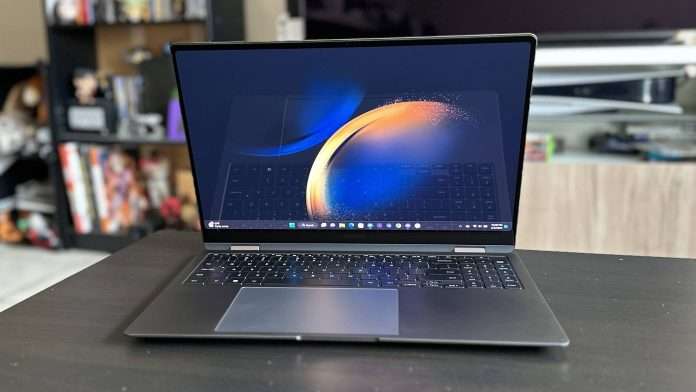Following its return to the laptop market in 2020, Samsung is really getting back into the swing of things. It provided very lightweight notebooks that fell just shy of a few key requirements with last year’s Galaxy Book 2 Pro and Galaxy Book 2 360.
In the class of 2023, Samsung raises the bar in terms of specifications. Yes, the Galaxy Book 3 Pro 360 is another lightweight laptop-tablet hybrid with a remarkably flexible display hinge. However, it comes standard with a 120Hz 3K 16-inch AMOLED panel, 13th-generation Intel Core processors, and a S Pen stylus.
All of this implies that Samsung may have created an all-around champion capable of becoming, if not all things to all people, then at least most things to the majority of people. Maybe it’s wishful thinking.
It’s another brilliant piece of engineering from a company that has gotten very good at this sort of thing
Design & Build
- 12.8mm
- From 1.66kg
- Aluminium build
The Samsung Galaxy Book 3 Pro 360, at 12.8mm thick, isn’t as thin as last year’s 11.9mm Galaxy Book 2 Pro 360, but it’s close. The result is that it feels really solid. Despite the fact that the main design feature is that you can flip the display from closed to back-to-back with the keyboard, it feels like a ‘regular’ laptop.
Speaking of the hinge, it’s yet another fantastic bit of engineering from a firm that has become quite proficient at it with its numerous laptops and foldable phones. This year’s model appears to have a higher durability factor, which would clearly require months or years to evaluate rather than a few of weeks. But, as I previously stated, the fact that it feels like a regular laptop is a testament to Samsung’s efforts.
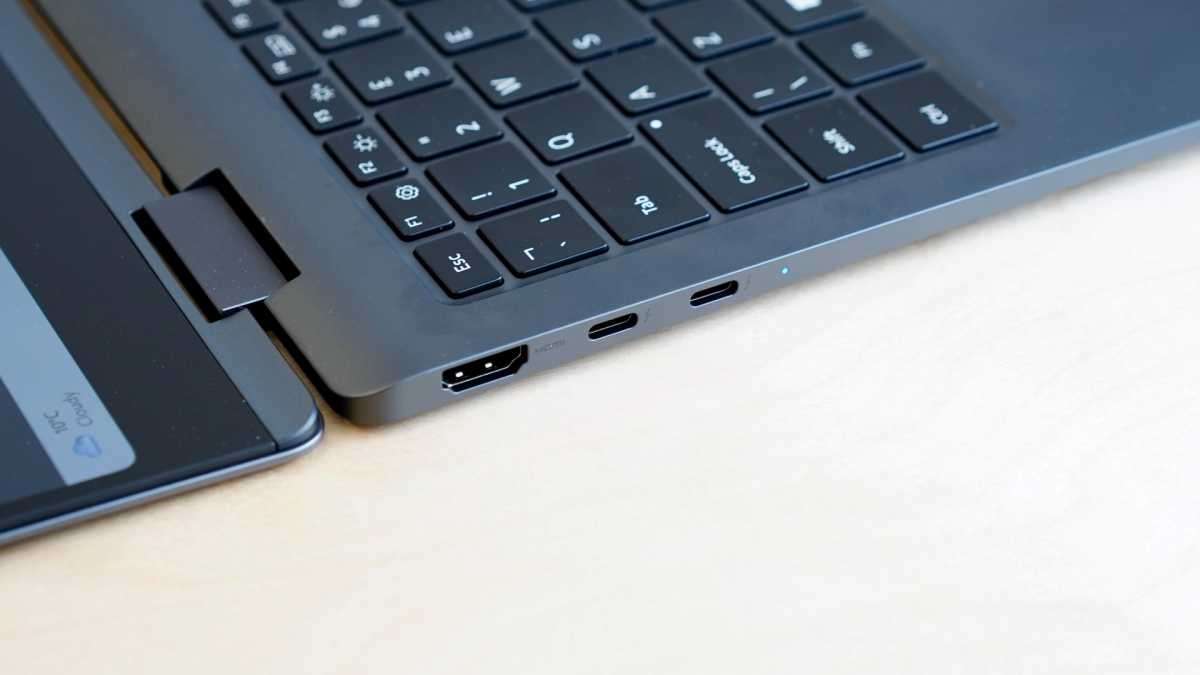
No, this hinge fails the one-thumb test, so I had to use my other hand to steady the chassis while it opened, lest it skid off the back of my desk. But, given its 360-degree capabilities, I’m inclined to give Samsung a pass – especially since many expensive non-convertible laptops fail the test as well.
To be clear, the screen of the Galaxy Book 3 Pro 360 does not completely flatten on the keyboard when fully opened, with either the rubber feet or the loosely attached S Pen leaving a tiny gap. However, when used as a super-sized tablet, it still feels quite solid. The hinge also provides adequate resistance when supported at a 135-degree angle, though much flatter and gravity may take hold with time.
It’s light for a full-sized laptop, weighing 1.66kg for the Wi-Fi-only form (which I tested) and 1.71kg for the 5G model. It’s not as light as the non-convertible Galaxy Book 2 Pro’s 1.16kg, but few laptops are. Of course, this is a hefty tablet, so you won’t be carrying the Galaxy Book 3 Pro 360 like an iPad when fully opened – at least not for long.

The Book 3 Pro 360 is available in Graphite or Beige, both of which are made of quality aluminum. The latter color may not seem particularly appealing, but it’s worth considering if you don’t want mucky fingerprints all over your equipment. I noticed an apparently permanent patina of grease over the lid of this Graphite model after only a few days of handling it.
In terms of connection, the Samsung Galaxy Book 3 Pro 360 outperforms many slim rivals, beginning with two USB-C ports on the left side (at least give us one on each, Samsung). They are, however, full Thunderbolt 4 ports, which is something.
Aside from that, there’s a single USB-A port, a microSD slot (a regular SD slot would have been preferable), an HDMI port, and a 3.5mm headphone jack. It’s a good provision for a 2-in-1, but not so much for a 16-inch laptop on the market.
There’s also a 1080p webcam directly above the display, which is always nice to see.
Screen & Speakers
- 16in AMOLED
- 120Hz
- 3K resolution
We’ve become accustomed to Samsung including OLED panels in its laptops. What we aren’t used to, and which is undoubtedly this generation’s most significant addition, is a refresh rate of 120Hz.
By default, it’s configured to scale dynamically between 60- and 120Hz, but change it to 120Hz alone and it’s silky smooth scrolling all the way. It will have a long-term impact on your battery life, as I’ll explain later, but the option is very useful when you’re plugged in.
Arguably this generation’s biggest contribution, is a 120Hz refresh rate
While the refresh rate is the most noticeable feature of the Samsung Galaxy Book 3 Pro 360 display, it is not the only one. This is a huge 16-inch screen with a 16:10 aspect ratio, allowing for a large canvas for everything from picture processing to drawing.
It’s also exceptionally crisp, with a 2880 x 1800 or 3K resolution that’s a significant upgrade over the 1080p Samsung Galaxy Book 2 Pro 360.
Because this is an AMOLED panel, you can expect deep blacks and vibrant colors. In the default Auto color profile, I recorded gamut coverage of 99.9% sRGB, 95.3% Adobe RGB, and 99.4% DCI P3, which is very strong and suitable for the majority of creative work.
With a maximum brightness of 358 nits, this isn’t the laptop to acquire if you’re going to be working outside a lot during the summer. However, it is perfectly adequate for indoor use.
There is an AKG-tuned quad-speaker system with two 5W woofers and two 2W tweeters on board, as well as Dolby Atmos capability. The sound is clean and clear, but it lacks the bass and deep spaciousness of a MacBook Pro, so I wouldn’t listen to music on it without a set of headphones, but it has more audio provision than many laptops.
Keyboard, Trackpad & S Pen
- Limited travel chiclet keyboard
- Large but off-center trackpad
- Bundled S Pen stylus
The typing experience on the Samsung Galaxy Book 3 Pro 360 is excellent, thanks to a full-sized keyboard with a number pad and well marked arrow buttons. That’s a fantastic start.
In terms of the keys themselves, the limited degree of travel on these chiclet keys means that they fall just short of the finest in the market. I greatly enjoyed typing on my MacBook Pro and the non-chiclet Dell XPS 13 Plus, which both have a nicer feel and result in less typing errors. It’s still a good deal, especially for a 2-in-1.
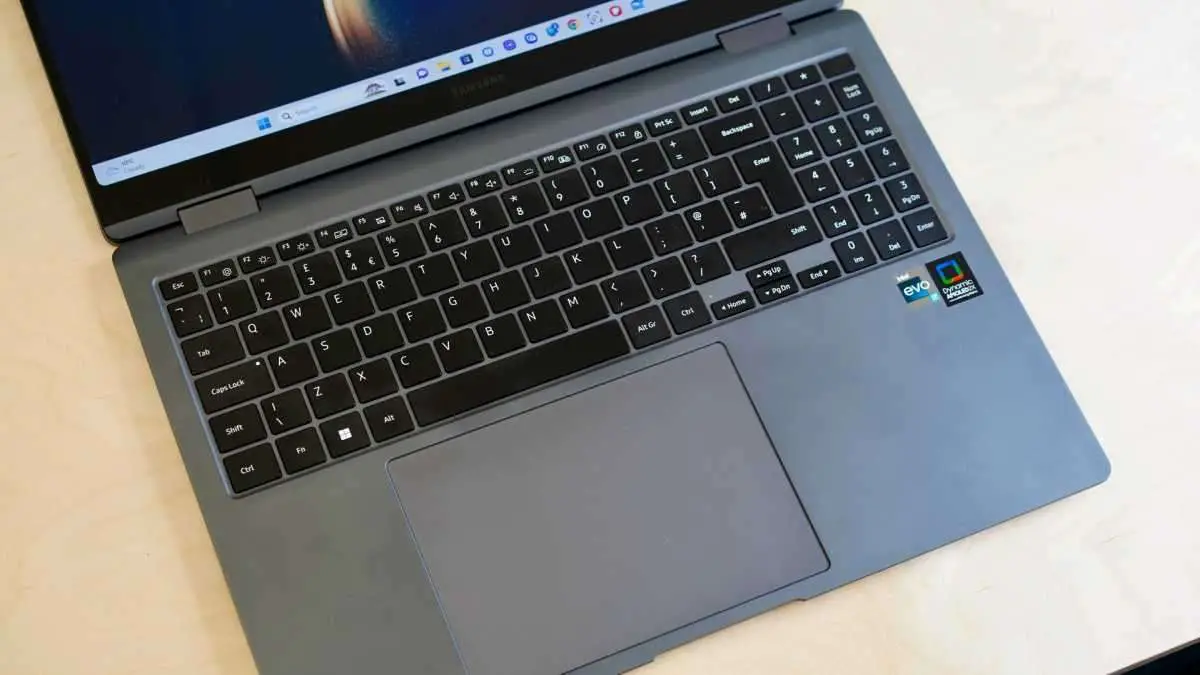
You also get a nice fingerprint sensor embedded into the physical power button in the upper right corner, which worked flawlessly during my testing.
However, I’m not entirely satisfied with the trackpad on the Book 3. It’s quite big enough, but the fact that it’s tilted to one side screwed up my feeling of what was a left-click and what was a right-click. Given more time, I’m sure I’d adapt, and it’s technically in line with the QWERTY keyboard (blame that lopsided numerical pad), but it’s not a completely natural experience out of the box.
The trackpad is mechanically only click in the lower half, with physical rather than haptic input. Also, while the touchpad is responsive enough for general broad sweep navigation, I found it a little imprecise when doing subtler things like trying to fine-tune the position of a cursor in a document. I was relieved to be able to connect my mouse.
Overall, it falls short of the subtle beauty of a MacBook touchpad, which is the standard against which Samsung should be assessed given its heritage and cost.
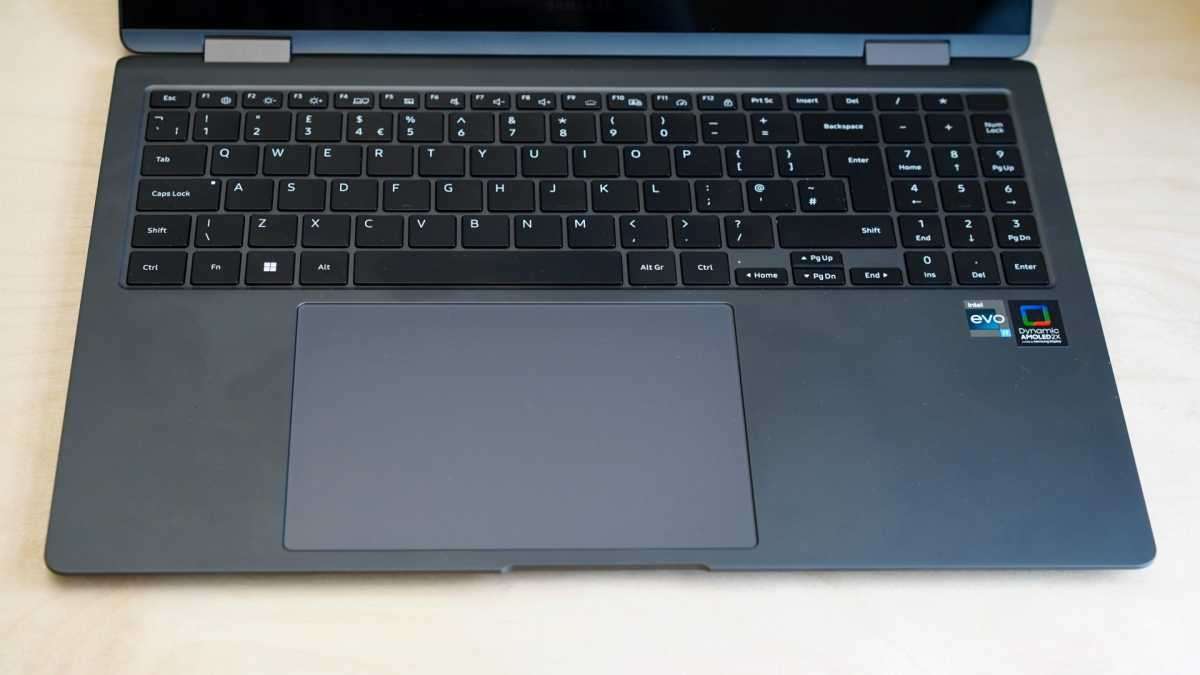
Specs & Performance
- 13th-gen Intel chips
- No discrete GPU option
- Up to 1TB storage
The Samsung Galaxy Book 3 Pro 360 is powered by Intel Core processors from the 13th generation. My test model has an i7-1360P processor and 16GB of RAM, while the standard model has an i5-1340P processor and 8GB of RAM.
No, it can’t compete with the powerhouse that is the Samsung Galaxy Book 3 Ultra, but few laptops are right now.
The generational advantage to its chip sees the Samsung Galaxy Book 3 Pro 360 besting those aforementioned Windows rivals quite handily
Using the Samsung Galaxy Book 3 Pro 360 for routine business duties was trouble-free for me. It breezed effortlessly through many Chrome tabs, emails, 4K video streaming, and more. The fans were only sometimes audible to me, and when they were, they weren’t very loud.

Since it lacks the discrete GPU options of the Ultra model, it goes without saying that this is not a gaming laptop. Anything remotely new won’t perform optimally, however older 3D games like Portal 2 work quite great. Star Wars Jedi: Fallen Order ran smoothly on the default Medium settings, although there were a lot of pauses and stutters while different cinematic components loaded.
The top-tier Book 3 Pro 360 beats over the Dell XPS Plus 13 and the Samsung Galaxy Book 2 Pro with their 12th generation Intel Core i7 CPUs in the CPU-focused Geekbench 5 multi-core test. It also competes with the MacBook Air M2, however the MacBook Pro M2 Pro destroys it as expected.
Due to the generational advantage of its CPU, the Samsung Galaxy Book 3 Pro 360 easily defeats those aforementioned Windows competitors in our standard GPU testing.
Samsung Galaxy Book 3 Pro 360 benchmarks
There are three different storage configurations available: 256GB, 512GB, and 1TB. However, if you want the larger SSD options, you’ll need to choose the faster processor and more RAM (16GB instead of 8GB).
Battery Life & Charging
- 76Wh battery
- 65W charger
The Samsung Galaxy Book 3 Pro 360 has a battery capacity of 76Wh, which is in line with what we’ve come to expect from a contemporary Windows 11 laptop. To put it another way, not terrible, but still not nearly adequate for a whole workday, and certainly nothing to bother an Apple silicon MacBook.
I discovered that the Book 3 Pro 360 would display the critical battery warning (at around 6%) after 7 hours of use, including a lunch break, under light work conditions that mainly involved Chrome-based browsing and Google Doc usage, a few YouTube videos, and regular email and Slack usage.
This was with HDR off, which is the usual setting, with the screen set to an adjustable refresh rate. The laptop could barely last 4 hours of a regular workday with 120Hz and HDR enabled.
With the screen brightness set to a rather low 120 nits, our standard looping 720p video test lasted for 14 hours and 26 minutes before shutting down. Although that is considerably less than the LG Gram 16 and significantly less than the Samsung Galaxy Book 2 360 (not to mention those MacBooks), it is still far from the worst outcome we have seen.
When it’s time to recharge, Samsung includes its customary 65W brick. From a powered-down state, I measured the charging rate over the first 30 minutes at 37%. Although it isn’t as quick as the Galaxy Book 2 360, that speed is about right for the laptop’s size and specifications. It will take little about 1 hour and 45 minutes to charge fully.
In conclusion, this is arguably the key factor keeping the Galaxy Book 3 Pro 360 from reaching its full potential. Samsung would be in serious business if they were able to design a 2-in-1 that could consistently last a whole workday on a single charge.
Software & Apps
- Windows 11 Pro
- Galaxy Book Experience
You still get some Samsung bloat even though Samsung doesn’t play around with the Windows 11 software on its laptops as much as it does with its smartphones.
Samsung Notes, which combines a typical note-taking software with S Pen integration, is one of the most helpful applications. It can also faithfully convert handwritten notes to digital text, which seems almost mystical and is also actually quite helpful. Samsung Noteshelf adds features like automated form generation, which puts an even more emphasis on utilizing Samsung’s excellent pen.
Other features include Quick Search, Quick Share, Bixby, and Samsung Gallery, all of which, depending on how committed you are in the larger Samsung ecosystem, are varied degrees of inessential.
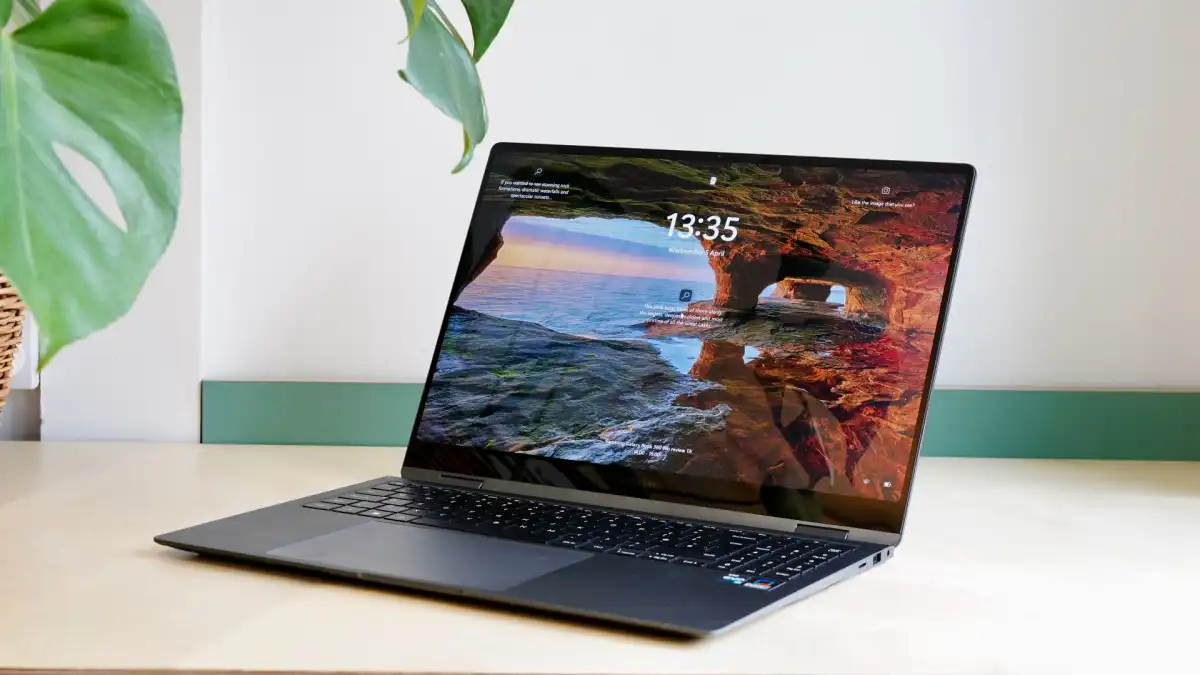
In terms of third party preinstalled applications, there are links to download Adobe Lightroom and Clip Studio Paint, which makes sense within the context of that included S Pen stylus and gorgeous AMOLED display. This really is a great tool for budding artists.
Price & Availability
For the best markets, the Samsung Galaxy Book 3 Pro 360 is offered in a variety of configurations, all of which are available directly from Samsung. The entry-level model, which comes with an i5 CPU from the 13th generation, 8GB of RAM, 256GB of storage, and Wi-Fi only, costs about €1,549.
For €1,900, you can upgrade to a 13th generation i7 CPU, 16GB of RAM, and 512GB of storage – the model tested here. You may also get up to 1TB of storage for €2,049.
There’s also a 5G variant about €2275, which has the standard spec plus mobile network access. I’m not clear why there isn’t a no-strings-attached alternative that provides you the best specs and 5G connection.
In the US you get just the one spec option from Samsung, with an i7 CPU, 16GB of RAM, and 1TB of storage for $1,899.99. However, BestBuy has the 512GB mdoel for $1,699.99.
Verdict
The Samsung Galaxy Book 3 Pro 360 is possibly the best 2-in-1 convertible we’ve tested. The laptop’s elegant design makes it appear and feel like a conventional full-sized laptop, yet the display can rotate around 360 degrees, and the included S Pen transforms it into an artist’s joy.
The big 16-inch AMOLED display is the main attraction here. It’s as smooth as it is bright and colorful, with a 3K resolution and a refresh rate of 120Hz.
The performance is excellent, albeit the battery will barely carry you through a working day. Making full advantage of that lovely 120Hz AMOLED display will also take its toll.
It’s a shame that the typing and trackpad experiences aren’t quite as good, since power users will still benefit from choosing a non-convertible model over this one. But, without a doubt, Samsung has produced its best 2-in-1 to date.
Specs
- Model tested:
- Windows 11 Pro
- 16in 3K AMOLED display (16:10 aspect ratio, 2880 x 1800, 120Hz)
- Intel Core i7–1360P
- Intel Iris Xe graphics
- 16GB LPDDR5 RAM
- 512GB SSD
- Full-size keyboard with backlighting
- 1080p FHD Camera
- Quad speakers (2 x 5W, 2 x 2W)
- Fingerprint power button
- 1x HDMI
- 2x Thunderbolt 4
- 1x USB 3.2
- MicroSD Multi-media Card Reader
- 3.5mm jack
- 76 Wh battery
- 65W charger
- Wi-Fi 6E
- Bluetooth 5.1
- 355.4 x 252.2 x 12.8mm
- 1.66kg


